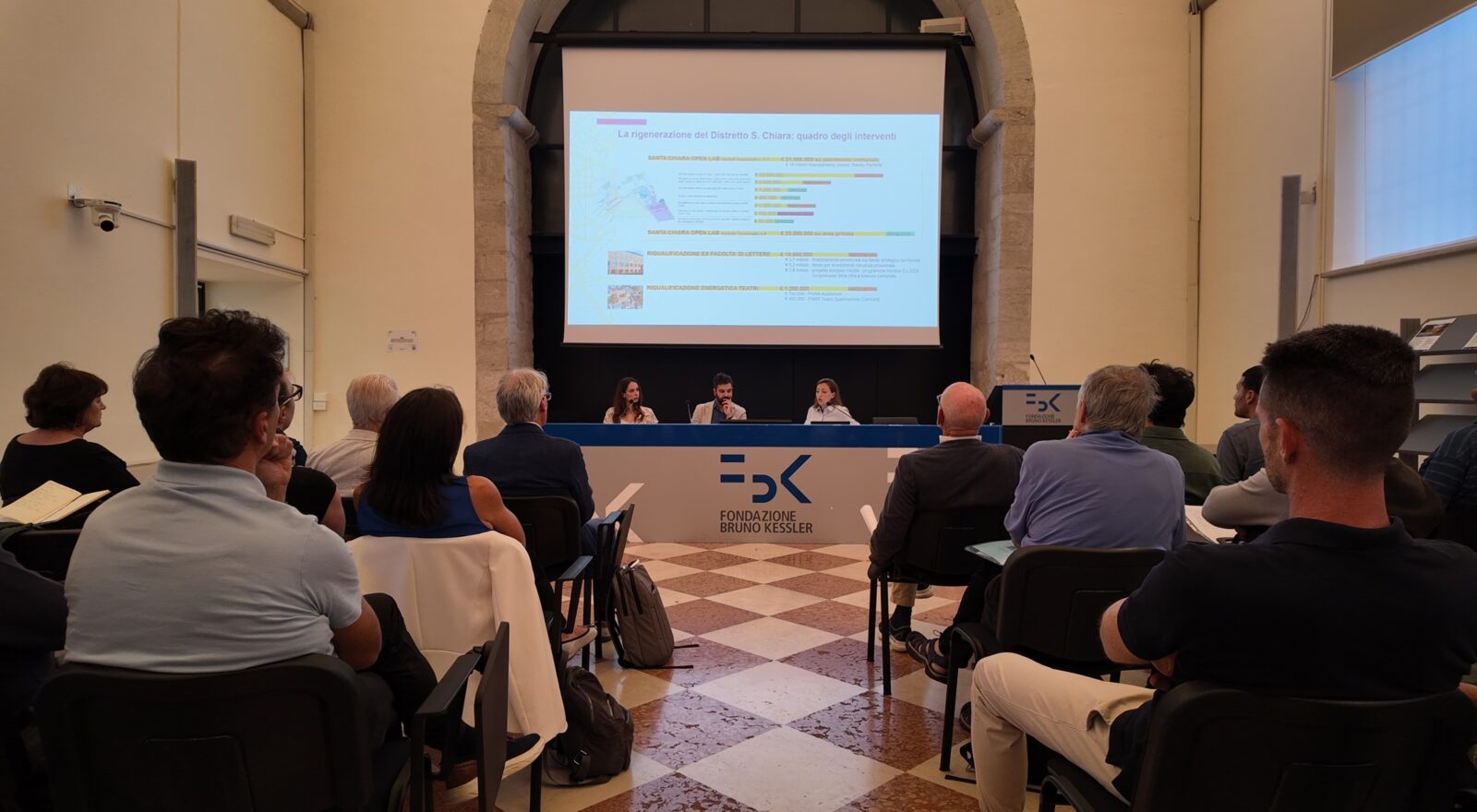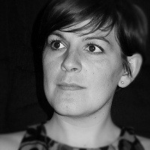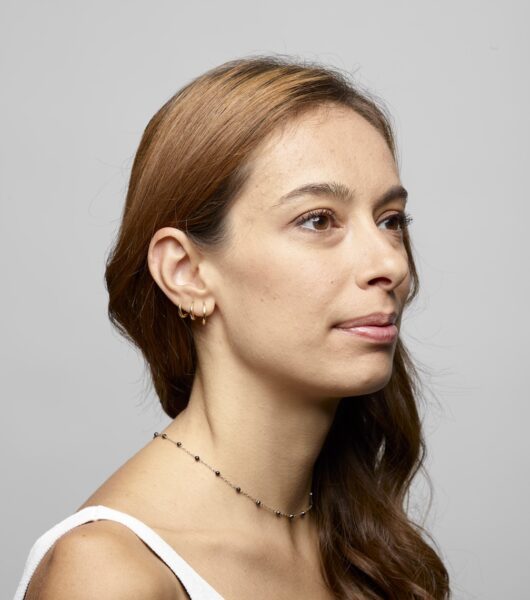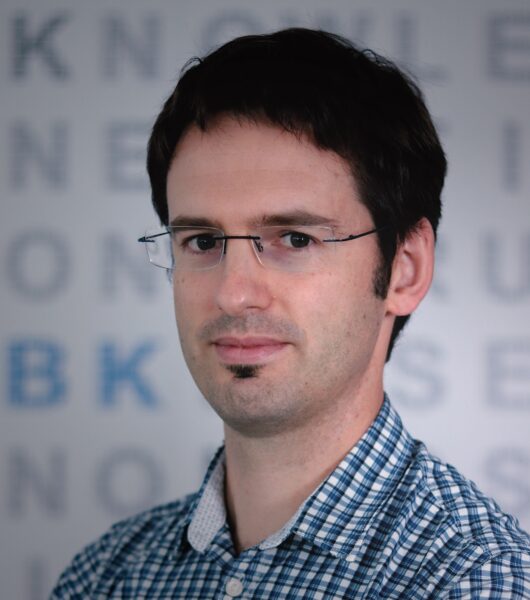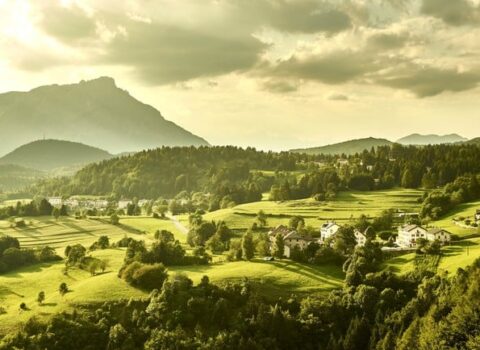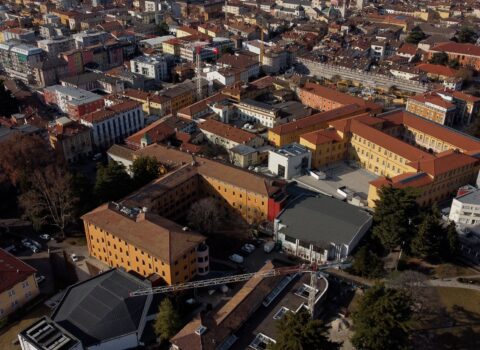
Urban regeneration and shared energy
This topic was addressed at the FBK Humanities Hub in Trento during a public event open to citizens. The discussion focused on the future of the Santa Chiara district in Trento and the active role of Renewable Energy Communities (RECs) in the Trentino region's energy transition.
“The event was essential to promote Renewable Energy Communities (RECs) across Trento and to raise awareness of the role institutions play in supporting shared energy,” Silvia Ricciuti, a researcher at the FBK Center for Sustainable Energy and organizer of the event, said. “To introduce the topic, we decided to begin with urban regeneration, focusing in particular on the Santa Chiara district in Trento, where funding from the European InCUBE project is also being utilized. Both FBK and the Municipality of Trento are involved in the project.”
The event opened with remarks from Andreas Fernandez, Councillor for Ecological and Digital Transition of the Municipality of Trento, who outlined the regulatory framework governing Energy Communities and highlighted initiatives already undertaken by the municipal administration.
After years of abandonment and disuse since the 1980s—resulting in visible degradation—the Santa Chiara district is now undergoing significant urban regeneration. This began with the renovation of the Crispi Schools (2001–2014), followed by the Bando Periferia call (ongoing since 2016), and continues with the redevelopment of the Former Faculty of Letters (Santa Chiara Cultural Services Center, underway since March 2025) Architect Federica Podetti of the Municipality of Trento explained that new municipal offices, a senior center, a youth center, and a bar will be constructed, along with a private complex (Habitat Complex) for residential and tertiary use. The heart of the district will remain the Santa Chiara Park, which is set to regain its central role.
Energy efficiency and the use of cutting-edge technology form the foundation of new building renovation approaches. Through the InCUBE European project—a collaboration between the Municipality of Trento and Fondazione Bruno Kessler—the Former Faculty of Letters has been selected as a demonstrator site to test the innovative solutions developed by European partners.
Providing further technical insight, Diego Viesi, Senior Researcher and Advisor in the Sustainable Territories Area at FBK’s Centre for Sustainable Energy, explained: “The building’s thermally insulated roof will be a key focus, as will a geothermal field with 20 probes in the park, connected to two heat pumps serving both the former faculty and the former cafeteria. A photovoltaic tile system will be installed on the gym roof, alongside systems for monitoring indoor environmental quality and worksite safety.” He added: “The concept of Renewable Energy Communities is also integrated into the InCUBE project. FBK is actively promoting their adoption both locally in Trento and at the provincial level through several European projects, including ECOEMPOWER, COMMUNITAS, and CELINE.”
While constructing a zero-emission building is relatively straightforward, the greater challenge in Italy lies in upgrading the existing building stock, which comprises the majority of national infrastructure. Architect Massimo Plazzer from the Provincial Agency for Water Resources and Energy (APRIE) noted that the Province of Trento approved a new Environmental Energy Plan in 2021, outlining strategies to boost renewable energy sources and lead the region toward decarbonization. In this process, Renewable Energy Communities (RECs) are considered a crucial component.
To raise awareness about the benefits of RECs and encourage their formation, the European ECOEMPOWER project was launched—led by Fondazione Bruno Kessler. Through this project, the Autonomous Province of Trento has established a dedicated one-stop shop, available both online and in person at APRIE offices. Its goal is to assist citizens, businesses, and organizations in creating and managing RECs, and to clarify the advantages of shared renewable energy.
RECs represent a new model of energy production and consumption: a legal entity uniting various actors—private citizens, local authorities, associations, and businesses—under the same primary substation to “share” electricity. The energy produced is shared virtually through the grid and, if consumed simultaneously with its generation, qualifies for financial incentives. These incentives—varying based on plant size, location, and consumption levels—can be used to maintain and expand installations, fund community services, or be redistributed among members. While the savings on electricity bills may be modest, the broader benefits include stronger social cohesion and environmental sustainability.
The impact of Energy Communities thus extends beyond economics: they serve as tools for local and regional regeneration by fostering collaboration among citizens, public institutions, and local stakeholders. Collective investment in clean energy encourages the rethinking of spaces, resources, and community bonds, turning the energy transition into a tangible opportunity to renew neighborhoods and reinforce a shared sense of place.
The meeting also featured practical insights from three local RECs: KönCeRT, TECER, and Cercar. In a moderated discussion led by Silvia Ricciuti, representatives shared their journeys, introduced their members, and described how they plan to use the incentives for social purposes. Speaking for KönCeRT were Elena Stoppelli and Dario Betti; for TECER, Sergio Costa and Azelio de Santa; and for Cercar, Mauro Dallapè.
The event was part of the “Startegia di Specializzazione Intelligente (S3)” project of the Autonomous Province of Trento.
